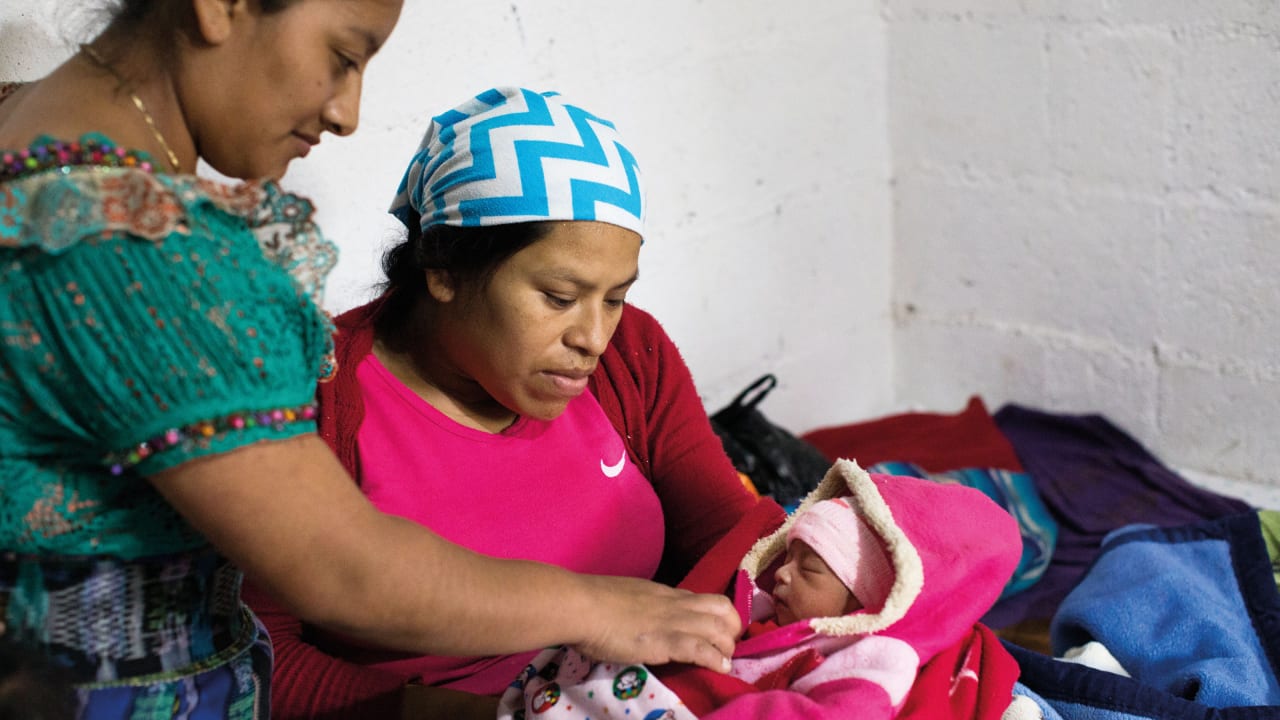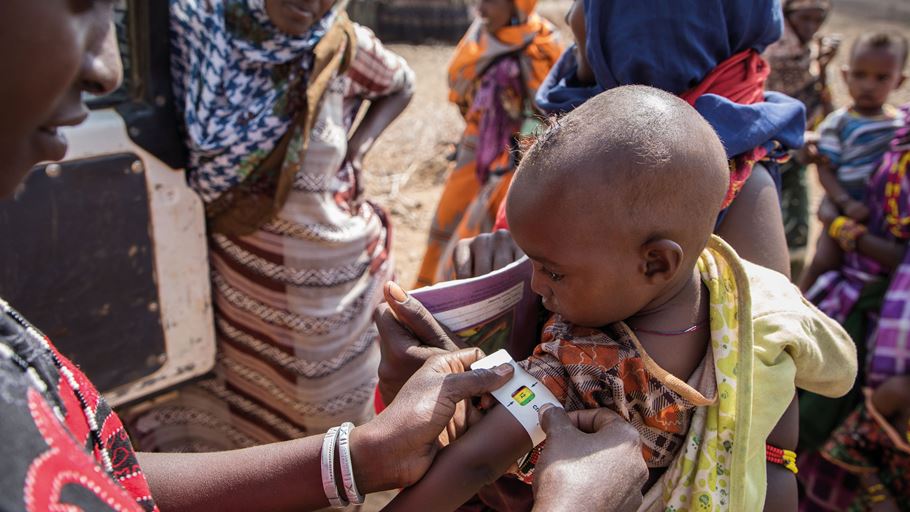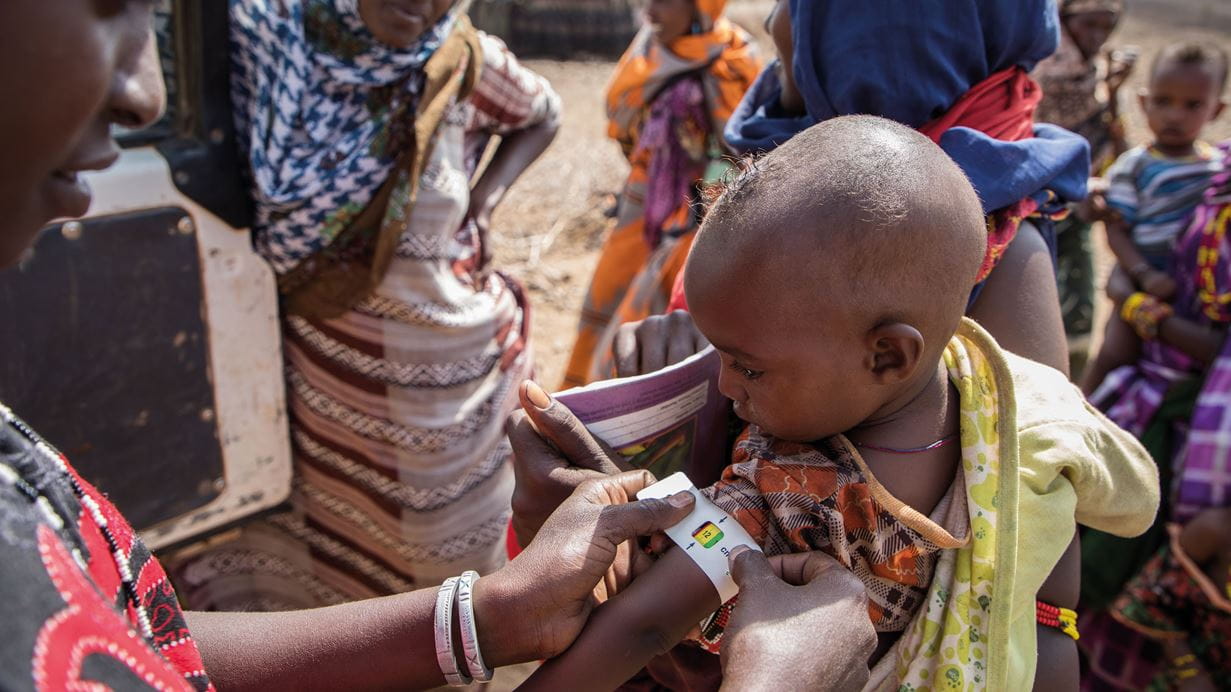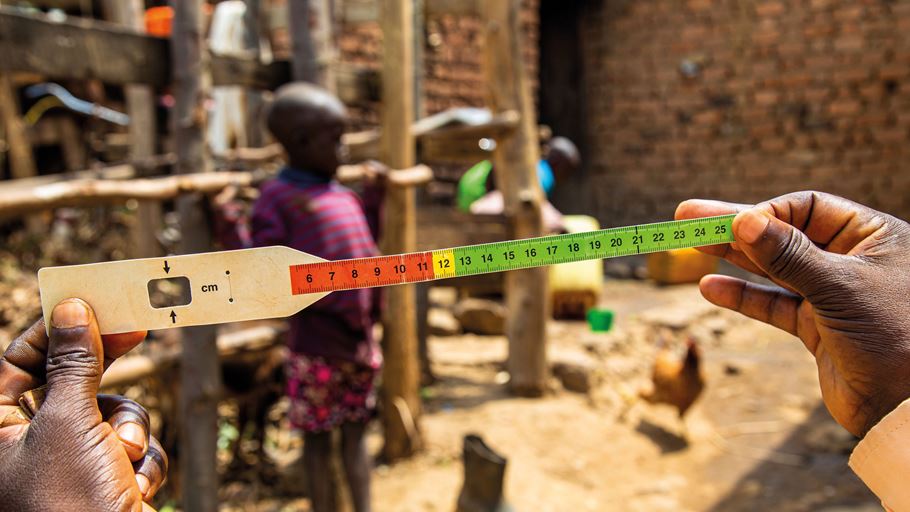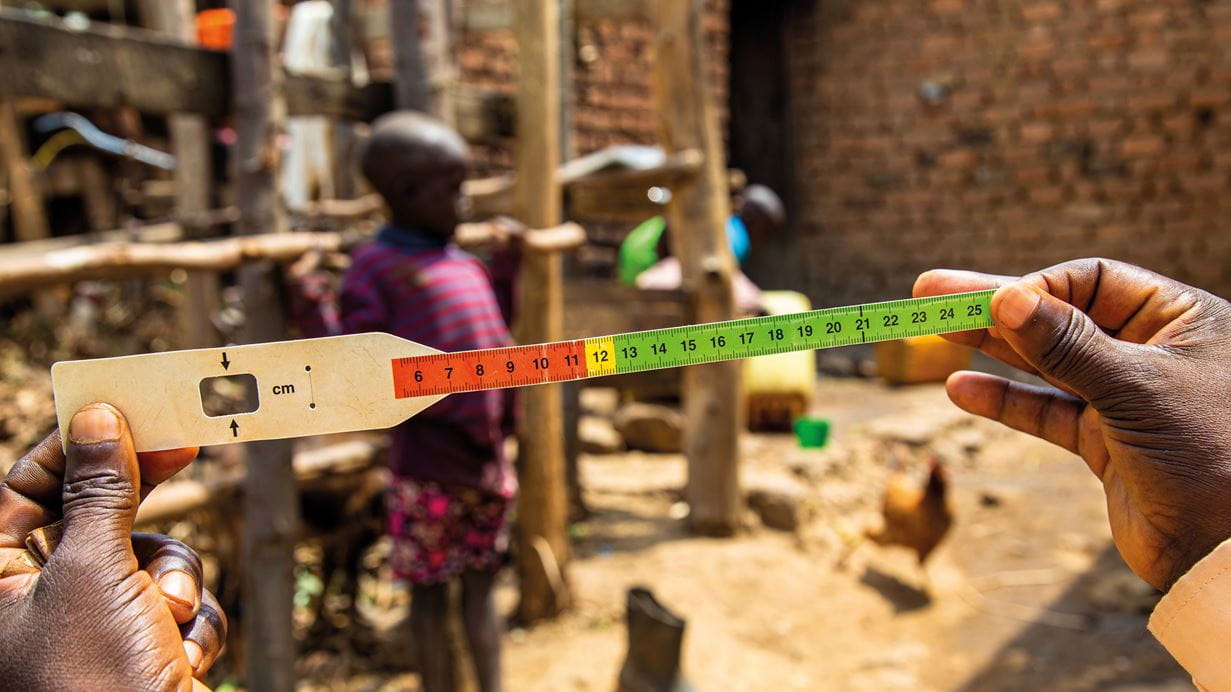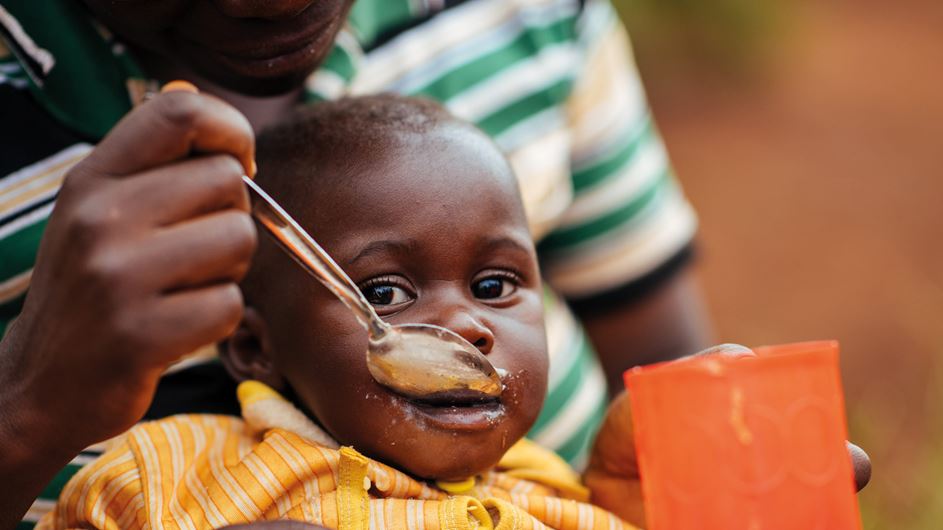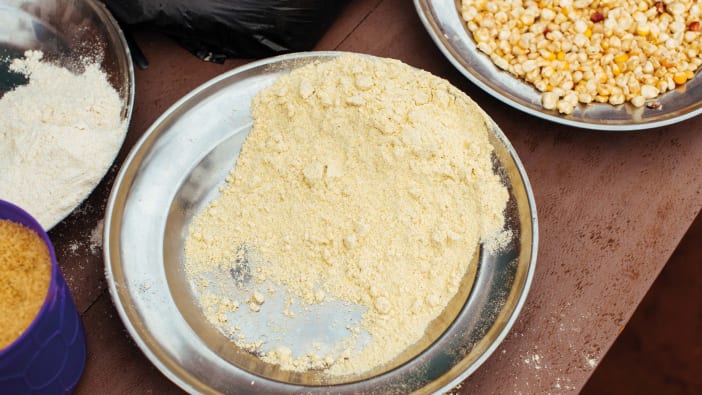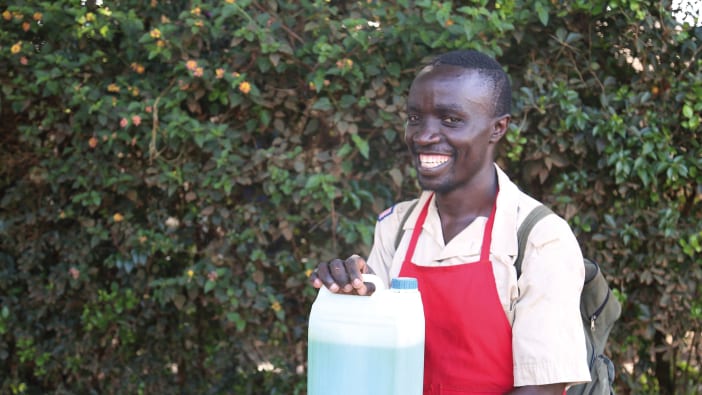Illness and intestinal worms decrease the body’s ability to absorb nutrients. So vaccination against common childhood diseases and timely treatment for worms are also very important.
Measuring malnutrition
A chart showing expected weight for age is commonly used to check that children are growing properly. However, scales and charts are not always available so, increasingly, a colour-coded measuring tape, known as a MUAC tape, is used.
The tape is wrapped around the upper arm of a child and it provides a quick and simple indication of malnutrition. This is something that community health workers, parents and older siblings can easily learn to do. The tape can also be used to check for malnutrition in adults.
Swelling may be a sign of severe acute malnutrition in children. One way to check for this is to apply normal pressure using thumbs on top of each of the child’s feet for about three seconds. If the skin remains indented for a few seconds after the thumbs are removed, the child needs emergency medical attention.
Treating malnutrition
Acute malnutrition needs to be assessed by a healthcare worker. For severe cases, treatment with a special high-energy nut paste is needed. In milder cases, high-energy foods such as porridge made from grains and legumes can be used.
If there are complications such as infection or swelling, people need care in a clinic or hospital where they will receive high-energy food, antibiotics and other treatments.


